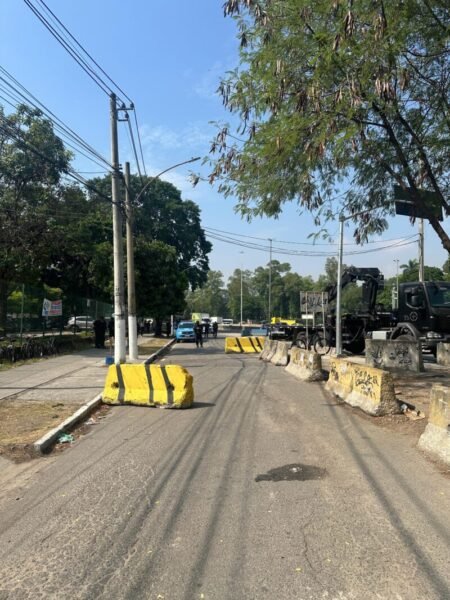On Tuesday (17/06), the Military Police carried out an operation in the Maré Complex, in Rio’s North Zone, to replace concrete Jersey barriers used to block access routes commonly exploited for transporting stolen cargo. First introduced in September 2024, the strategy has expanded and reportedly contributed to a drop in crime, particularly truck robberies. The barriers, placed on key roads linking Avenida Brasil to various communities, limit the movement of large vehicles into areas controlled by criminal factions such as Red Command (CV) and Third Pure Command (TCP). While effective in disrupting logistics used by organized crime, the initiative has drawn criticism from residents and NGOs over its impact on local mobility and daily life.
This Content Is Only For Subscribers
To unlock this content, subscribe to INTERLIRA Reports.
Installation in September
The concrete blocks were first installed in September 2024 by the Military Police. Even without the barriers, truck traffic in the region is already challenging. The barriers were placed on four roads connecting Avenida Brasil to Nova Holanda. These structures prevent large vehicles from entering the area at high speed, which previously posed a risk to residents. Access to supermarkets, supply deliveries, and ambulances was maintained. The blocks serve to restrict passage to a specific location: a deactivated bus terminal in Nova Holanda, where the stolen cargo had been delivered.
Zero Robberies
Following the initial test in September, the number of barriers increased in March. Currently, 12 of the 22 entry roads into the complex are equipped with these official barricades. According to data from the 22nd BPM (Maré), since the most recent installations in March, there have been no recorded cases of stolen trucks entering the communities in the area.
Criteria defined
The next locations or battalions that will receive Jersey barriers have not yet been determined. However, criteria for their implementation are already in place. The area must share conditions similar to those in Maré: a setting that facilitates the transport of stolen cargo into conflict zones, and a high frequency of stolen goods being brought into the community in large vehicles.
CV and TCP areas
Despite criticism from residents and NGOs, the first barriers were installed in Nova Holanda, a territory controlled by Red Command. Subsequently, the areas of Vila do João and Vila dos Pinheiros, under the control of the Third Pure Command (TCP) also received the barriers. Surrounded by three of Rio’s major expressways — the Yellow Line, the Red Line, and Avenida Brasil — the Maré Complex is composed of 15 communities, split between the control of the two rival factions.
Analysis:
The use of Jersey barriers by the Military Police in the Maré Complex represents an operational shift toward spatial control as a means of disrupting organized crime logistics in Rio de Janeiro. By physically restricting access points commonly used for transporting stolen cargo, authorities aim to interfere with the circulation routes that sustain the criminal economy within the favelas.
However, the long-term sustainability and social impact of this measure remain open to debate. While the barriers may hinder criminal operations, they also impose limitations on the movement of residents, goods, and emergency services. Criticism from NGOs and local communities points to the risk of further isolating these neighborhoods, potentially deepening distrust between residents and law enforcement. The presence of physical barriers can reinforce perceptions of occupation rather than protection, especially in areas already stigmatized and underserved by public services.




